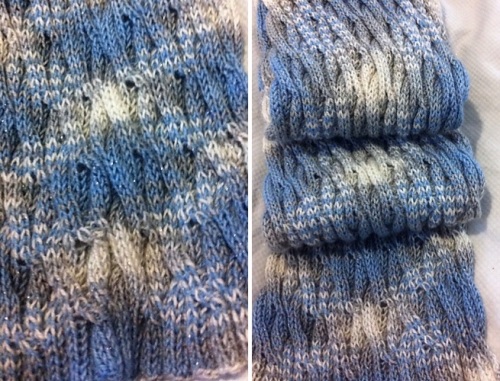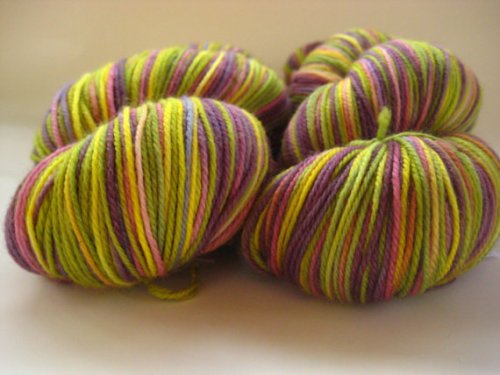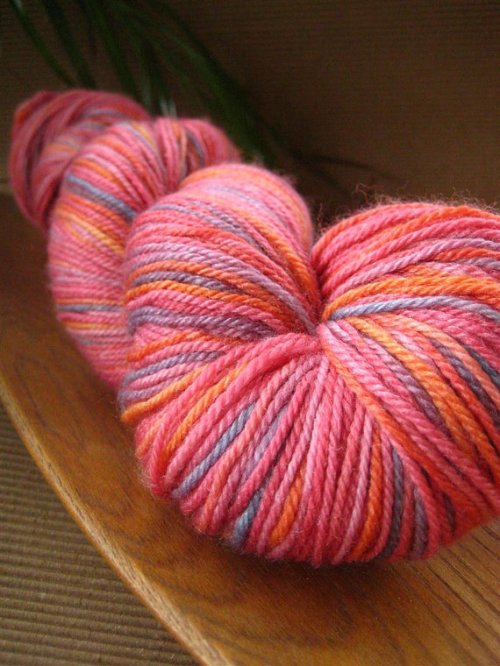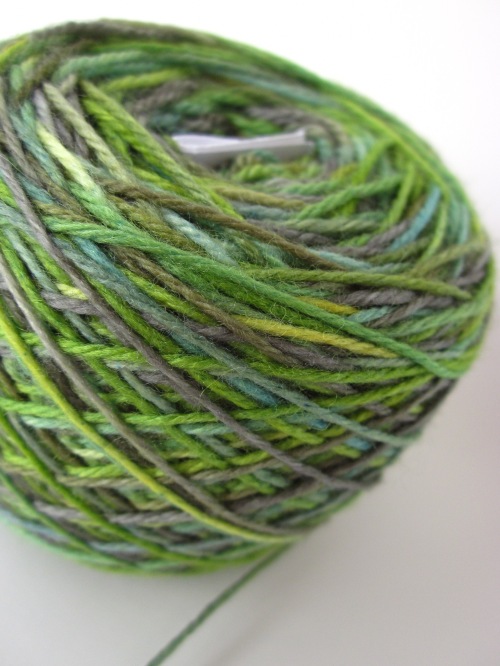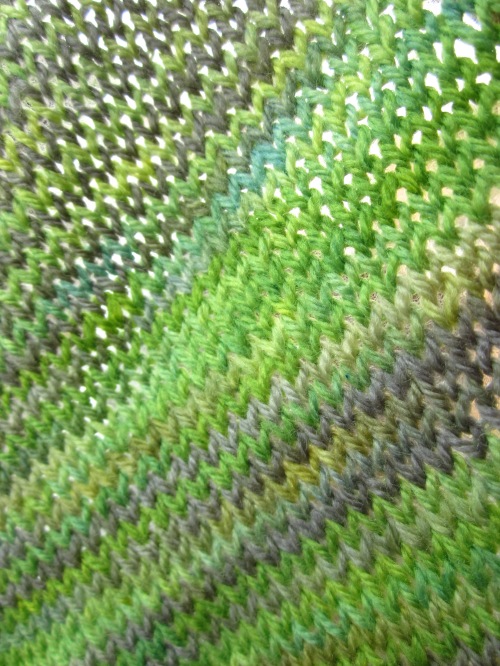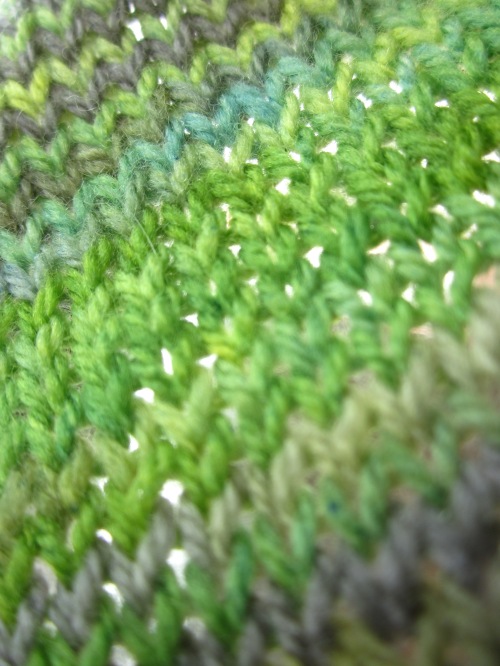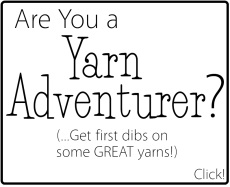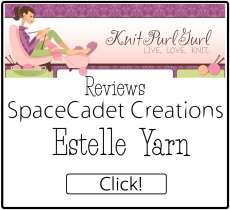Last week, I asked you guys to give me your questions and tell me what intimidates you about hand-dyed yarns. And I loved the responses — I got some great food for thought, and you guys prompted me to ask a couple of experts to contribute to the ebook and answer some of your questions. Exciting stuff!
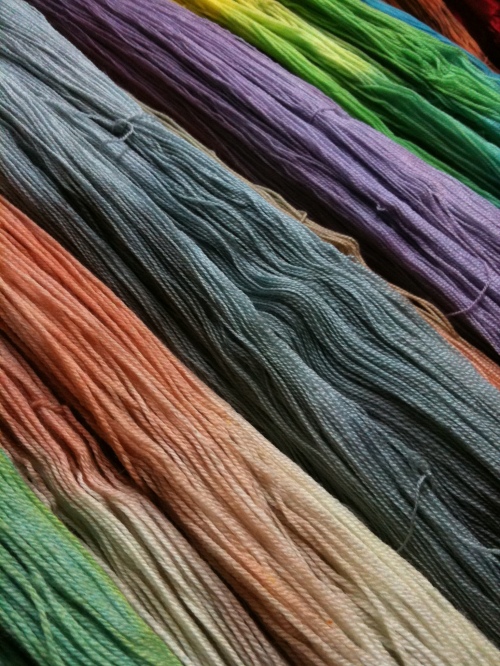 And that post has started several really interesting conversations with friends about their approach to hand-dyed yarns. In each of these conversations, there have been some saying they are always trying to avoid pooling, and there are others saying that they just sit back and go where-ever the yarn takes them — treating it as an adventure, a journey to be traveled, whether the yarns pools or not. I have to admit, I loved hearing that because, as a dyer, that’s how my creative process often feels too — a little adventurous, a little out of control. Sometimes I’m in charge and the colours follow my lead, but sometimes… sometimes it’s better to stop controlling and just go where-ever the colour takes me. Sometimes it takes me to some really beautiful places.
And that post has started several really interesting conversations with friends about their approach to hand-dyed yarns. In each of these conversations, there have been some saying they are always trying to avoid pooling, and there are others saying that they just sit back and go where-ever the yarn takes them — treating it as an adventure, a journey to be traveled, whether the yarns pools or not. I have to admit, I loved hearing that because, as a dyer, that’s how my creative process often feels too — a little adventurous, a little out of control. Sometimes I’m in charge and the colours follow my lead, but sometimes… sometimes it’s better to stop controlling and just go where-ever the colour takes me. Sometimes it takes me to some really beautiful places.
The Beauty of Pooling (…no, really!)
And pooling can be the same way too. Yes, absolutely, sometimes pooling can be horrible — just horrible — and I totally get why knitters and crocheters strive to avoid it. But sometimes pooling can take a really exciting turn that gives spectacular — and unexpected — results.
Take this scarf for example, knit by my friend Megan. Now, we’ve all seen pooling that forms diamond patterns before, but I have to say I’ve never seen a more perfect and even example than this. And though this was entirely unintentional, it adds so much to the scarf — gives it a real feeling of fun and adventure. In fact, she liked it so much that when she switched to her second skein of yarn, Megan was really careful to join it in such a way that the argyle-pooling continued uninterrupted all the way to the end of the scarf. Spectacular!
Pattern: Here and There Cables by Norah Gaughan; Yarn: SpaceCadet Creations Lucina in Megan’s Frost
.
So, ok… being surprised by nice, evenly repeating pooling along a nice, even rectangle is one thing, but when you get patterned pooling on a shaped project like a hat, that is really something. Here’s a one that Megan knit (that woman has some kind of uncanny pooling gift, I tell ya!) for a little girl with brain cancer, and when I saw the pooling, I nearly fell off my chair. Check out the pictures — this is not colourwork, this is the yarn just pooling in a beautiful way. I love the way the stripes work through the colours and then back out again in reverse order, and they stay in that formation right up until they hit the sharpest decreases in the crown. Amazing!
Pattern: Swirl Hat by Mandie Harrington; Yarn: SpaceCadet Creations Estelle in Ice Skating
.
But what if stripes and argyle-diamonds aren’t your thing? Well, check out this shawl by Karrie of KnitPurlGurl.com. Because it’s crocheted instead of knit, the stitches move the colours about in a different way… and it produces small squares of pooled colour that look to me just like tiled mosaic. Honestly, I can’t take my eyes off it! Breathtaking!
Pattern: Wycheproof Shawl by Rebecca Velasquez; Yarn: SpaceCadet Creations Estelle in Cold Flame
.So, have you ever had a project start to pool in a really beautiful way? Did you love it? And did you do anything special to encourage the pooling?
——————————————————————————————————–
Pattern Giveaway
Don’t forget, there’s only a few days left to enter the Pattern Giveaway to win beautiful shawl patterns from RockandPurl and Leslie Thompson. Click here to see the patterns and get entered!

